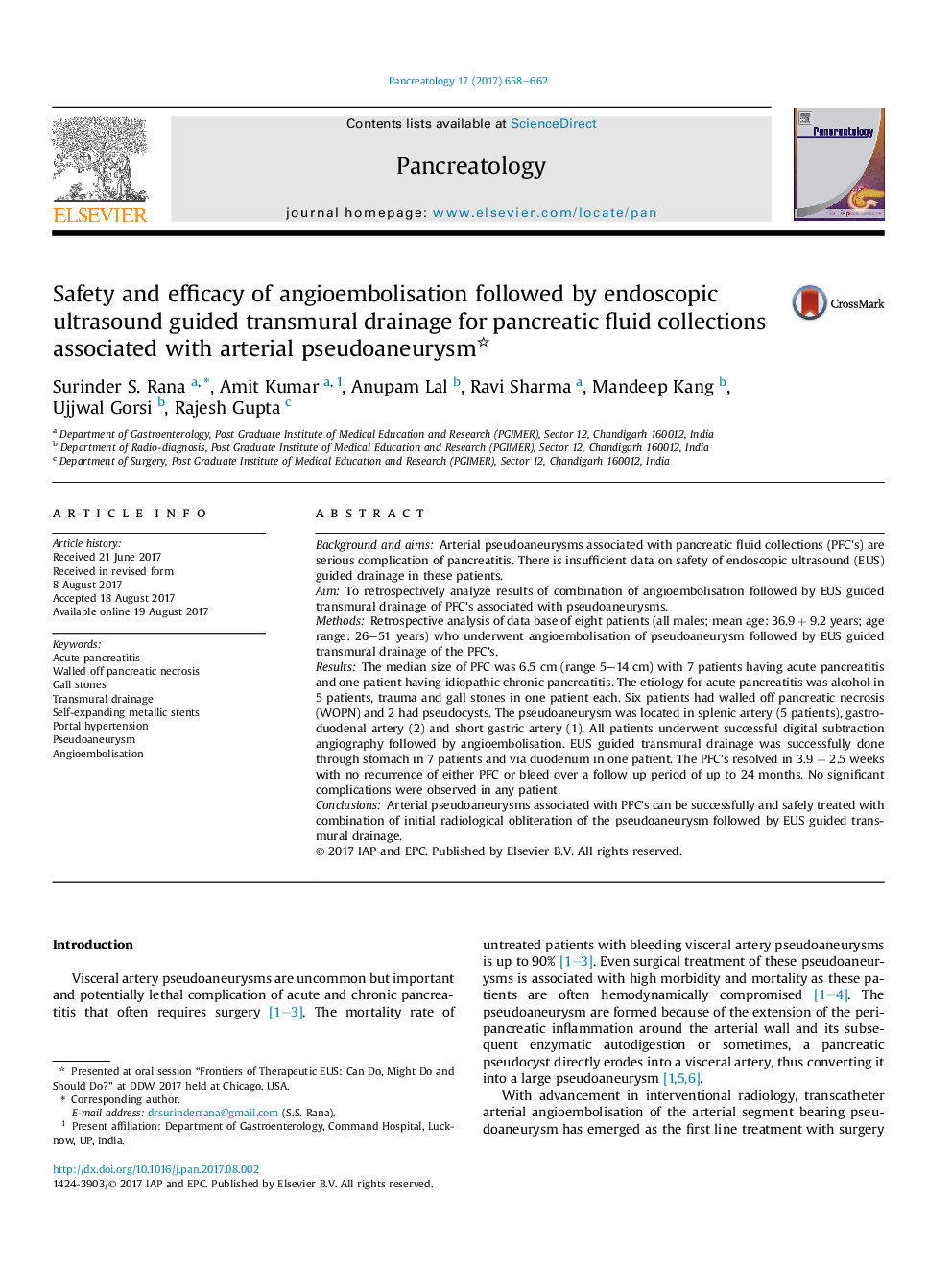| Article ID | Journal | Published Year | Pages | File Type |
|---|---|---|---|---|
| 5661103 | Pancreatology | 2017 | 5 Pages |
Background and aimsArterial pseudoaneurysms associated with pancreatic fluid collections (PFC's) are serious complication of pancreatitis. There is insufficient data on safety of endoscopic ultrasound (EUS) guided drainage in these patients.AimTo retrospectively analyze results of combination of angioembolisation followed by EUS guided transmural drainage of PFC's associated with pseudoaneurysms.MethodsRetrospective analysis of data base of eight patients (all males; mean age: 36.9Â +Â 9.2 years; age range: 26-51 years) who underwent angioembolisation of pseudoaneurysm followed by EUS guided transmural drainage of the PFC's.ResultsThe median size of PFC was 6.5Â cm (range 5-14Â cm) with 7 patients having acute pancreatitis and one patient having idiopathic chronic pancreatitis. The etiology for acute pancreatitis was alcohol in 5 patients, trauma and gall stones in one patient each. Six patients had walled off pancreatic necrosis (WOPN) and 2 had pseudocysts. The pseudoaneurysm was located in splenic artery (5 patients), gastro-duodenal artery (2) and short gastric artery (1). All patients underwent successful digital subtraction angiography followed by angioembolisation. EUS guided transmural drainage was successfully done through stomach in 7 patients and via duodenum in one patient. The PFC's resolved in 3.9Â +Â 2.5 weeks with no recurrence of either PFC or bleed over a follow up period of up to 24 months. No significant complications were observed in any patient.ConclusionsArterial pseudoaneurysms associated with PFC's can be successfully and safely treated with combination of initial radiological obliteration of the pseudoaneurysm followed by EUS guided transmural drainage.
